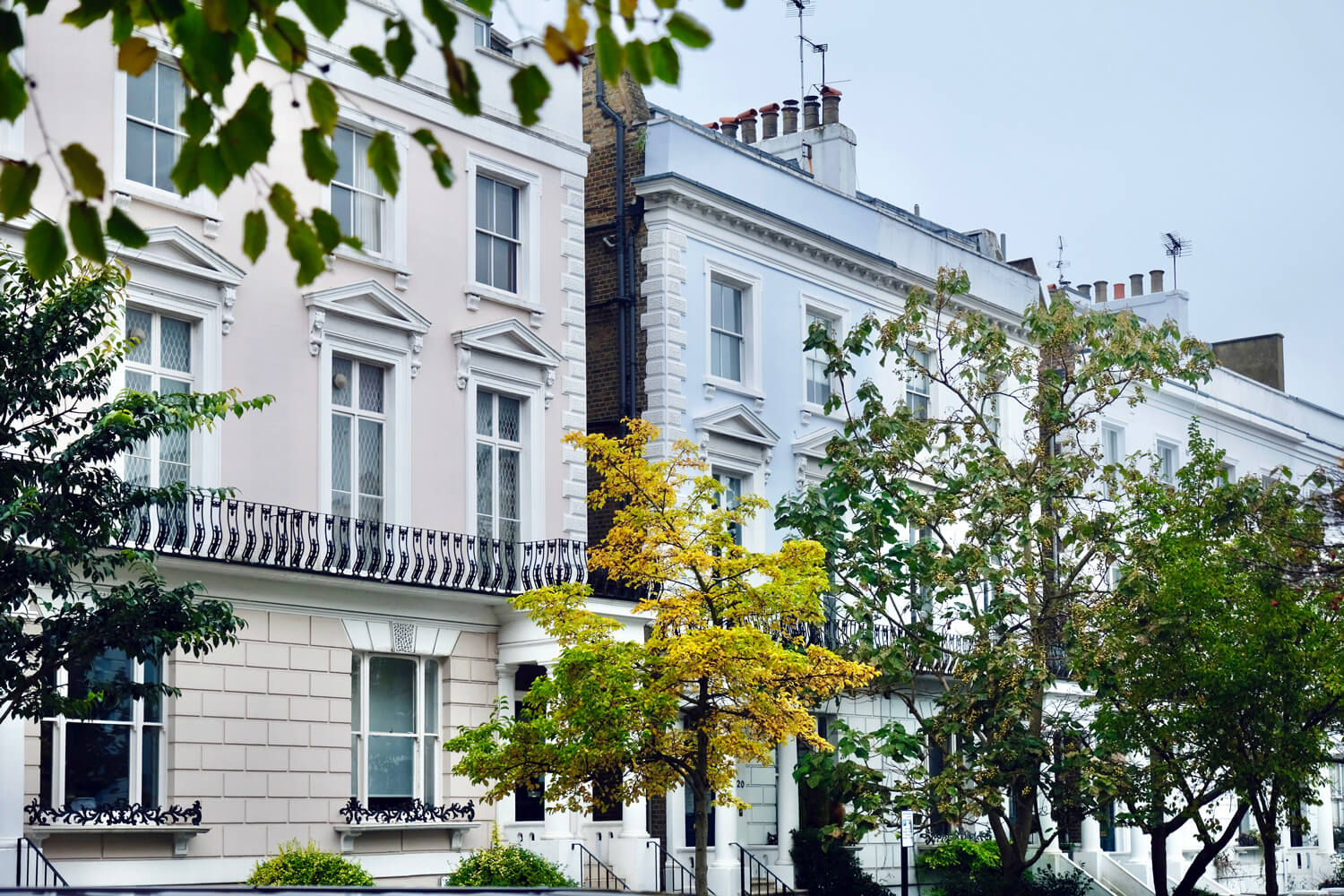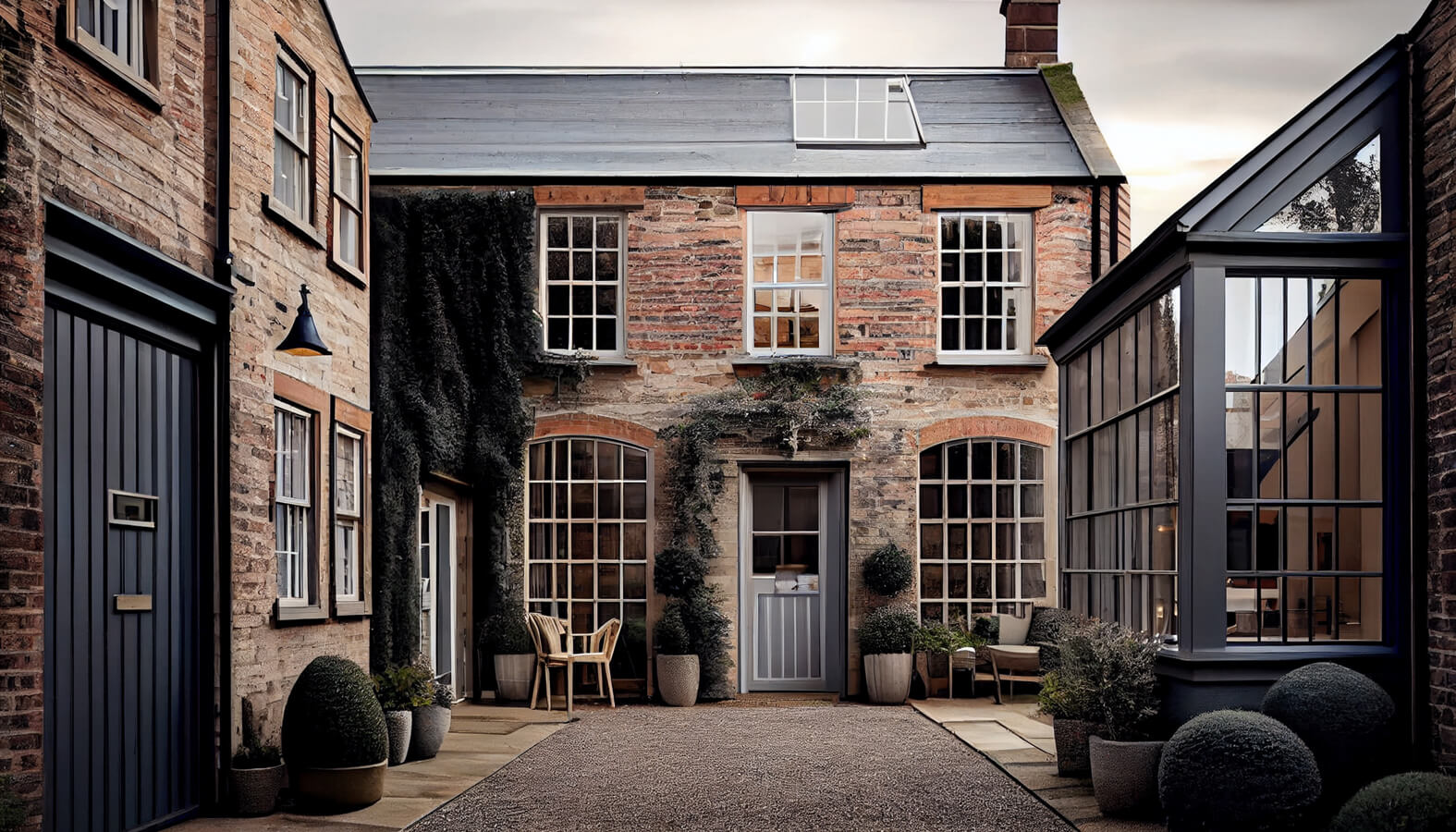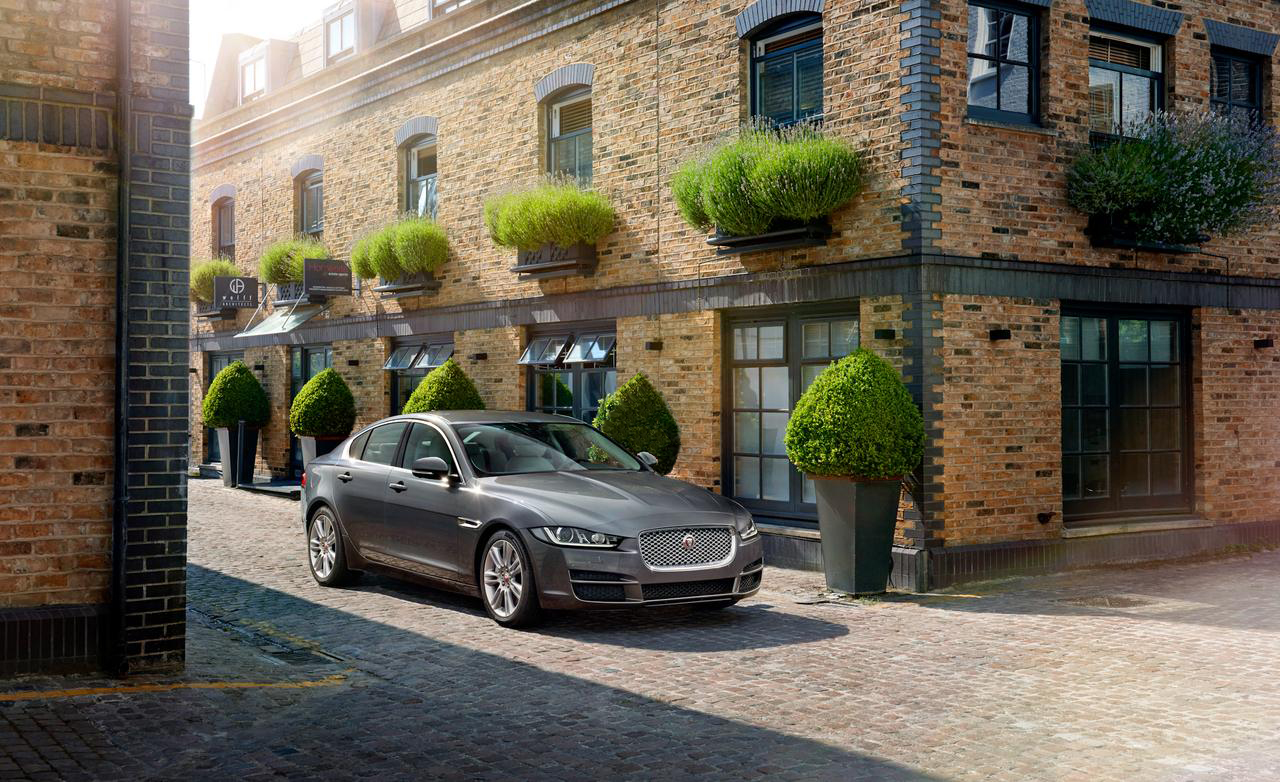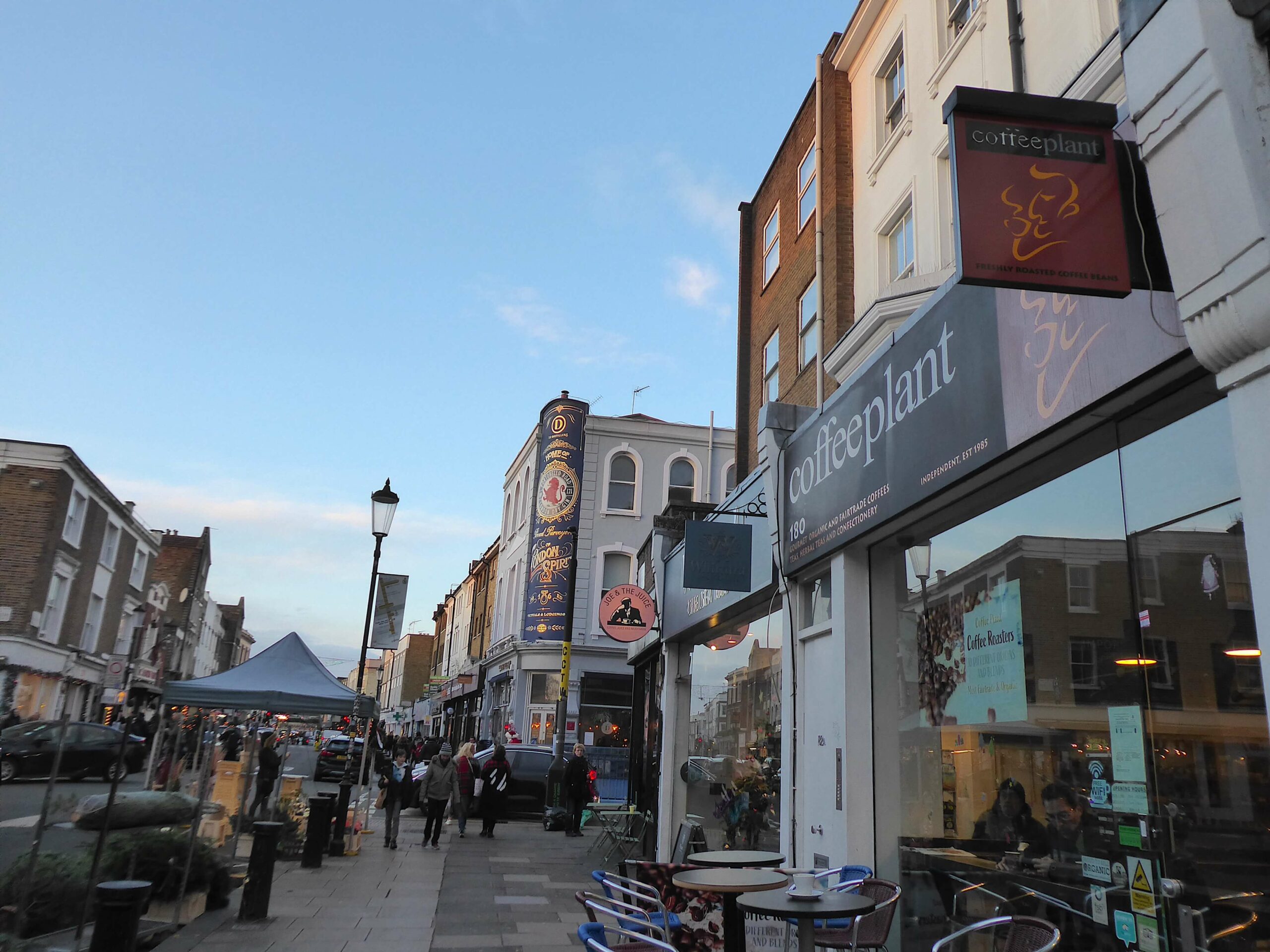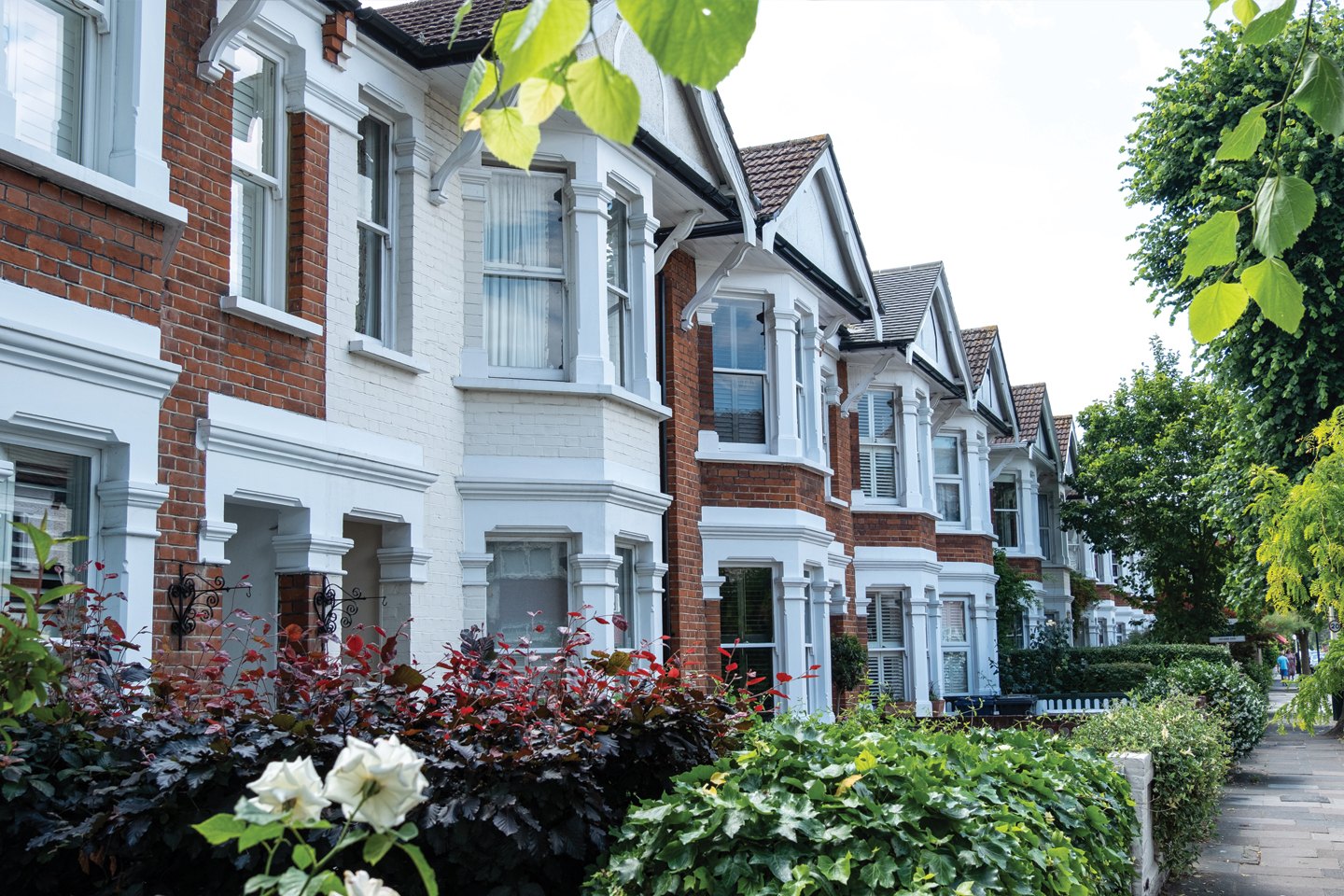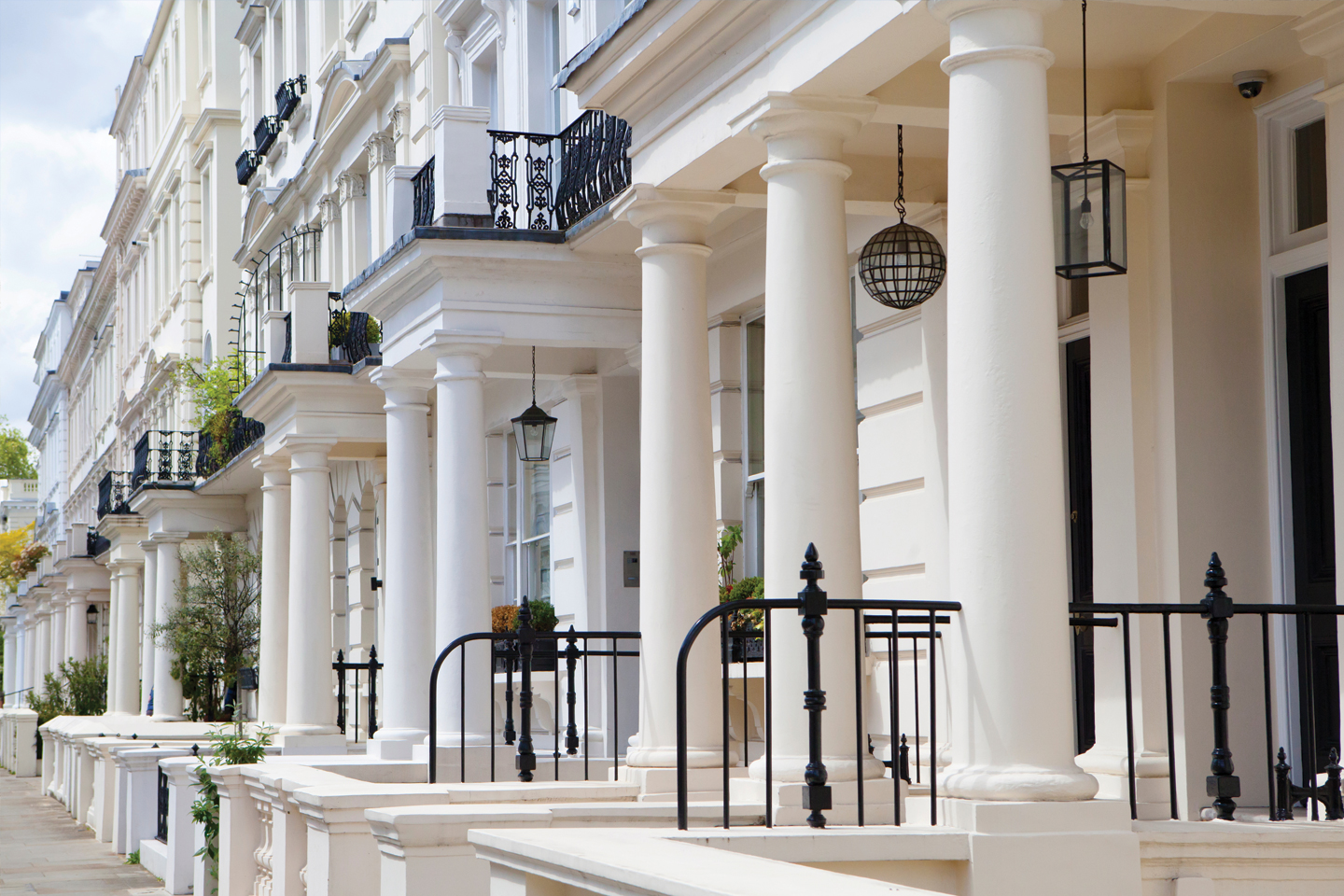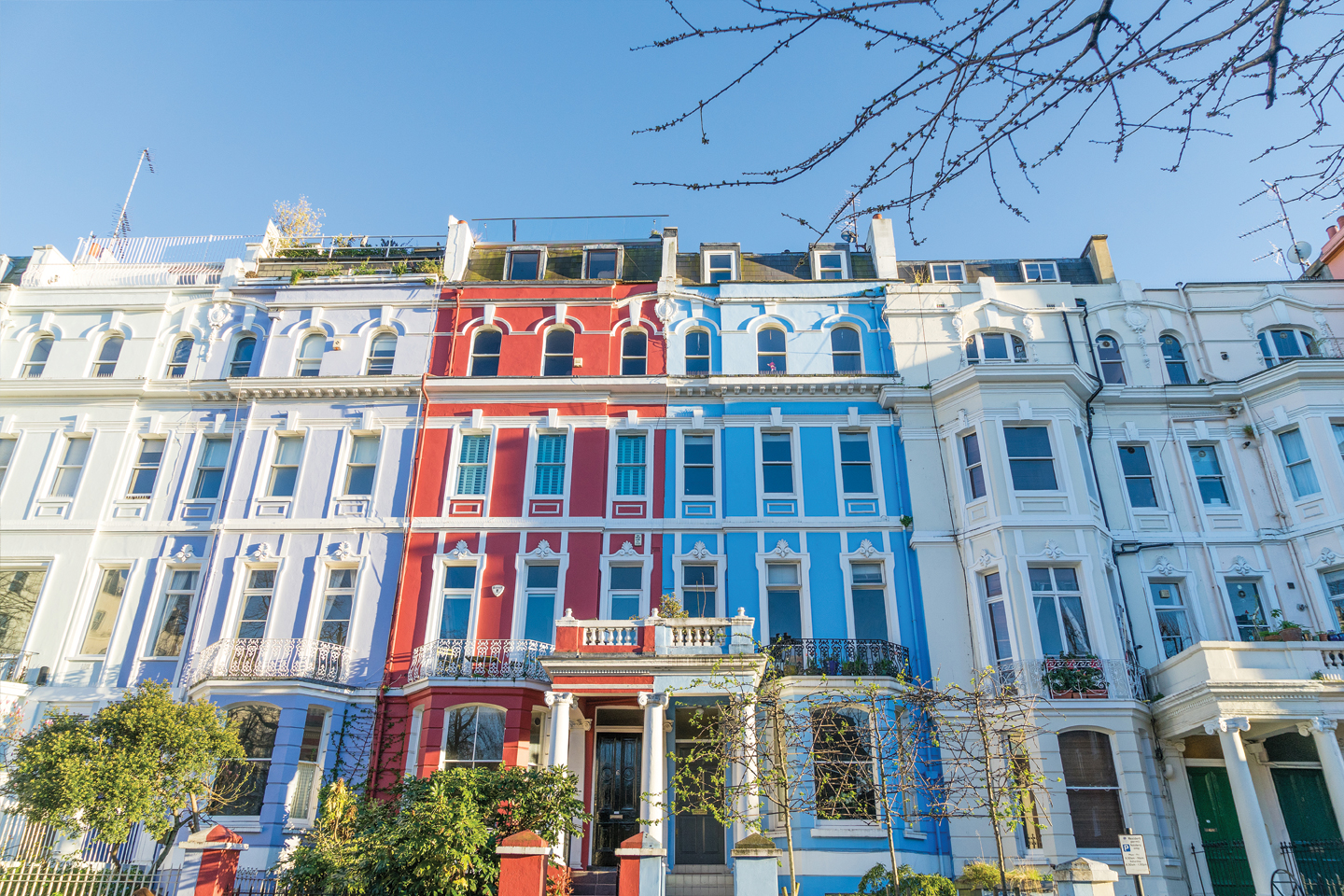What effect is the rising base rate having on house prices?
As you know, at Homesite, we like to keep you up to date with all the latest news. It is rising mortgages and the base rate that have been the grabbing the headlines over the last six months. So, after last month’s better than expected figures, the markets were watching very closely to see whether inflation was finally on the retreat.
The latest data has now been released and, it seems, last month was no one-off, as headline inflation has dropped once again, down from 7.9% to 6.8%. If the trend continues next month, it could mark a turning point for the UK’s economy. That would be especially good news for the housing market as continually rising mortgage costs and the uncertainty over how high they might go has steadily chipped away at both prices and buyer confidence. There are still likely to be one or two more rises to come (see finances) but the base rate should peak earlier and some way below the 6.5% that had been forecast.
Despite it all, house prices are continuing to prove remarkably resilient. Halifax, Nationwide and Rightmove are all reporting falls in July but only between 0.2% and 0.3% in what is normally a flat month.
As Kim Kinnaird, Director, Halifax Mortgages, says:
“In reality, prices are little changed over the last six months, with the typical property now costing £285,044, compared to £285,660 in February. The pace of annual decline also slowed to -2.4% in July, versus -2.6% in June. These figures add to the sense of a housing market which continues to display a degree of resilience in the face of tough economic headwinds.”
According to the main indices, the area most affected by the rising base rate is sales volumes. Nationwide reports, in June, that they were 10% below pre-pandemic levels (2019) and the most up-to-date figures, Rightmove’s, show, in July, sales volumes were down by 12%. At the same time, there was a shortage in the supply of new properties coming up for sale, whose numbers were also down by 12%, which helped support prices.
It’s the top two tiers of the housing market – second-stepper and the top-of-the-ladder homes - that saw the biggest falls in sales volumes - down 14% on 2019 levels.
Surprisingly, it’s first-time buyer sales that are holding up the best, with many searching for smaller homes in order to offset their higher borrowing costs. As a result, sales volumes in the FTB sector had the smallest falls at 9%.
Looking ahead, it may be a while before the new, more positive inflationary data has any discernible effect on sales and prices, especially as more hesitant buyers will want to see inflation falling for a third month before making a move. After that, how the market responds will depend on how quickly and how far mortgage rates fall. Most commentators, however, are not expecting mortgages to come down significantly over the next 18 months, so house prices are unlikely to go shooting up again, but they should at least stabilise, with sales volumes returning to more normal levels.
HOUSE PRICES AND STATISTICS
This month, the most recent indices all show a small monthly fall of between 0.2% and 0.3%. Annually there is a greater disparity - their figures ranging from +0.5% to -3.8%.
Nationwide: July: Avge. price £260,828. Monthly change -0.2%. Annual change -3.8%
Halifax: July. Avge. price £285,044. Monthly change -0.3%. Annual change -2.4%
Land Registry: June: Avge. price £287,546. Monthly change 0.7%. Annual change +1.7%
Zoopla: June: Avge. price £260,500. Annual change +0.6%
Rightmove: July: Avge. price £371,907. Monthly change -0.2%. Annual change +0.5% (asking prices on Rightmove)
If you’re thinking of investing in a new property, contact us today
Spotlight on Kensington Gardens
Dreamed up by Queen Caroline in the 18th century, these celebrated gardens were originally part of Kensington Palace. Today, they are open to everyone – no longer exclusive, but still extraordinary.
You are invited to explore the historic tree avenues, majestic vistas and blossoming flower walks where generations of writers and artists have set their imaginations free. Follow in their footsteps, and you might just meet the park’s most famous fictional resident – Peter Pan, the boy who wouldn’t grow up. You can find him down by the Long Water, keeping company with the swans and ducks.
As you wander through the park, you’ll discover world-famous landmarks like the towering Albert Memorial and the iconic Italian Gardens. At the Diana Memorial Playground, little visitors can board a wooden pirate ship and set sail for adventure.
Perhaps you’re looking for a bit of peace and quiet? The meandering flower walks on each side of the park offer a tranquil place to sit and admire fine horticulture. There are wilder expanses, too, where the park’s biodiversity flourishes in meadows alongside veteran trees - living relics of the park’s historic past. In these spaces, it’s hard to believe you’re in the middle of a city.
No Planning Required
The things you can build in your back garden
At Homesite we know most of our buyers are looking to add value to their purchases, so when a
prospective house comes up with a decent-sized garden, many will eye it up wondering what they could build
without getting tangled up in our nightmarish planning system. There are, you’ll be pleased to hear, quite a lot
of things you can do that don’t require planning permission, most of which are covered by your Permitted
Development (PD) rights. These include:
1) Rear extensions
2) Garden offices
3) Sheds
4) Greenhouses
5) Garages
6) Playhouses
7) Bike and bin sheds
8) Saunas
PD comes with a large number of restrictions (see below) but as long as you follow the rules, you can, in theory
just get on with your project. However, as it’s a complex area it would be wise, before you do anything, to
check with your local planning authority and then apply for a Lawful Development Certificate, which proves
your building is fully compliant. If you don’t and there is any doubt about the legitimacy of what you’ve built, it
can cause serious problems when you come to sell. The good news is that a Lawful Development Certificate is
relatively cheap and easy to obtain and your neighbours have very limited means to object.
Not everyone has the same PD rights – flats and maisonettes do not and, if you live in a National Park, Area of
Outstanding Natural Beauty, a Conservation Area or your home is listed, those rights can be removed or
restricted. There is also a limit on how many changes you can make using PD. Your planned new building,
along with anything that was added to the house or garden (including sheds) since 1948 must, together, not
take up more than 50% of your total garden area.
PD rules vary according to what you are building but the three main categories are listed below. Bear in mind
that these are rough guides only and you should always check the full details before you do anything.
Rear Garden Extensions
The main PD requirements are:
• They cannot extend beyond the rear of the original house by more than four metres for a detached house; or
three metres for any other house.
• They cannot exceed four metres in height, but if the extension comes within two metres of a boundary, the
height at the eaves cannot exceed three metres.
• The materials should be of a similar appearance to those on the existing exterior of the house.
• They must not, together with any other extensions or outbuilding added since 1948, take up more than half
the garden.
• You can build a larger extension of up to eight metres for a detached house; or six metres for any other
house if you apply to the local authority for Prior Approval. They will then consult with any adjoining
neighbours. If any objections are raised, they will only be taken into consideration if there is an impact on the
amenity of their property ie such things as - overlooking, overshadowing, loss of daylight or privacy.
Two storey rear extensions
The main PD requirements are:
• They will need Prior Approval (see above).
• They cannot extend beyond the rear of the original house by more than three metres and should be at least
seven metres from the rear boundary.
• The roof pitch should match the existing house.
• The overall building height should be no more than 7m.
• Together with any other extensions or outbuilding added since 1948, they must not take up more than half
the garden.
• The materials should be of a similar appearance to those on the existing exterior of the house.
Garden offices/studios
The main PD requirements are:
• These must be single storey with eaves no higher than 2.5 metres or less than 4 metres for a dual-pitched
roof or 3 metres for any other type of roof.
• The overall height must be no more than 2.5 metres if the building is within 2 metres of the boundary of the
plot.
• No verandas, balconies or raised platforms.
• Together with any other extensions or outbuilding added since 1948, they cannot take up more than half the
garden.
• They cannot be used for overnight accommodation.
Sheds, playhouses, greenhouses, garages and sauna cabins
The main PD requirements are:
• These must be single storey with eaves no higher than 2.5 metres or less than 4 metres for a dual-pitched
roof or 3 metres for any other type of roof.
• The overall height must be no more than 2.5 metres if the building is within 2 metres of the boundary of the
plot.
• No verandas, balconies or raised platforms.
• Together with any other extensions or outbuilding added since 1948, they cannot take up more than half the
garden.
Whatever you are planning on building, though, the golden rule is check with your local authority first, or you
might end up wasting a lot of money and have to take it all down again.
Links:
Planning Portal
www.planningportal.co.uk
Permitted Development
planningportal.co.uk
Lawful Development Certificates
planningportal.co.uk
Prior Approval
planningportal.co.uk
Let’s make it better
If you’re thinking about getting some work done on your house, you are not alone.
According to research from Lloyds Bank, as a nation we’re obsessed with home
improvements. A staggering 44% of us have either completed some significant home
improvements or are planning on doing so shortly.
The most common reasons cited for undertaking projects were:
To change the use of a room (32%). And our favourite target is the spare room, which we
regularly turn into an office or an extra entertaining space. Changing a room’s function is
unlikely to add any value, a fact recognised by 40% of those interviewed. However, a further
17% believed that in doing so, they had added £10,000-£25,000 and a highly optimistic 10%
were under the impression they had added between £25,000-£50,000. Nobody mentioned
that sacrificing a bedroom can just as easily reduce the value of a property.
And that brings us to our most common motivation - which is, of course, to add value (33%).
The survey reveals that it’s an area where we have a high degree of confidence in our own
abilities, as 25% of us buy properties with the intention of adding value either by updating or
extending them.
29% of home improvers claim that, as the result of the work they’d carried out, the property
was worth between £10,000 to £25,000 more. That’s not a bad return when you consider
that the average home improvement project costs just £4,000.
Our confidence can sometimes be misplaced, though, as we have a tendency to over-
estimate the value we add, especially if the work is not done to the right quality. Around 10%
of our projects go wrong, landing us with a bill that’s typically as high as £3,200. None of it
was our fault, of course, 54% of us blamed shoddy workmanship for the problems.
Reading between the lines, what the survey really shows us is that many of us, myself
included, harbour the belief that we are part-time property developers. Unfortunately, with
little real experience in the area, we are not always as good at it as we like to think we are.
Lloyds Bank takes a more diplomatic view,
Most homeowners will dabble with home improvements at some stage, whether it & is a DIY
project or a major construction. Whats important is to ensure the job is done to a high
standard as botched jobs can be quite costly to rectify. Although the reasons for home
improvements may differ from person to person, making a house a home is a key motivator
Renters Reform Bill
Michael Gove’s much-delayed Renters Reform Bill has finally got its first reading in Parliament. Its purpose is to improve tenants’ rights and give them security of tenure in their homes and help local authorities tackle rogue landlords. As many of our customers at Homesite are landlords, we thought you should know how it might affect you. So, what exactly is in the reform bill?
- Section 21 Notices:The most contentious issue is the scrapping of Section 21 ‘no-fault’ eviction notices. Landlords will need to provide a specific reason for evicting tenants, using a Section 8 notice. Valid criteria include; anti-social behaviour, rent arrears, consistent late payments and any kind of criminal activity. Repossession orders can also be made if landlords are; undertaking a substantial remodelling that makes the property uninhabitable, if they are selling, or are returning the property to a holiday let. The problem is, repossession orders will have to go through the courts, where there is currently a huge backlog and so they could take up to 12 months. The government is proposing to create an ombudsman to mediate in any disputes and has said they will fast-track the court process but, to date, they have not put any of the relevant infrastructure in place.
- Rolling tenancies: Tenancies will automatically be assumed to continue unlike the current assured shorthold tenancies, which typically only last 12 months.
- Rent increases: The notice period for any increases will double to 2 months and be restricted to once a year.
- Pets: Landlords will not be able to refuse pets unless there is a valid reason if they are banned in the lease, for example. In mitigation, landlords can charge tenants for ‘pet insurance’ which should cover any potential damage.
- Landlord rating portal: Tenants will be able to rate their landlords as they do for Airbnb or Checkatrade. They will also be able to see their landlord’s letting history and give them a score.
- Property Ombudsman: New Private Rented Sector Ombudsman to be introduced to resolve landlord and tenant disputes. This already applies to landlords with letting agents but will be extended to all private landlords.
- Repeated serious rent arrears: These will be mandatory grounds for eviction and should close the current loophole where tenants can avoid eviction by paying their arrears just before a possession hearing.
- Minimum Housing standards: They currently only apply to social housing but will be extended to the private rental sector and properties should:
- a) Meet the current statutory minimum standard for housing and be in a reasonable state of repair.
- b) Have reasonably modern facilities and services (kitchens under 20 years old and bathrooms under 30).
For full details see: Government’s minimum housing standards
- Families and those on benefits: Tenants cannot be rejected solely on the basis that they receive benefits or have children.
It is likely to take around 12 months before the Bill becomes law. In the meantime, the Government will be watching anxiously to see if the steady stream of landlords leaving the market turns into a full-blown-exodus which could have serious implications for the long-term health of the entire rental sector.
If you’re a landlord and are looking to expand your portfolio we, at Homesite, can help – all you need do is to take a look at all the fantastic properties we have currently
Make your property shine
We, at Homesite normally give you tips buying property. But what about if you are trying to sell - how can you maximise its appeal, especially in today’s more competitive market. Below are some simple tips for making it shine without spending a fortune:
1) Kerb appeal is incredibly important. If it doesn’t look good on the outside, potential buyers may not even bother to go inside:
Wash and clean external doors and windows.
Trim the hedges.
Sweep away the leaves.
Remove any weeds.
It is also worth considering repainting the front door and replacing the door furniture if looks a bit tired. It's amazing what a difference it makes if the entrance area looks clean and well cared for.
2) Hallways: They set the tone for the entire property. If they are dark, dirty and cluttered, any potential buyer will begin their viewing with a negative mindset.
Make sure there are enough hooks and cupboard space to remove clutter.
Replace any out of date light fittings and if the space is a bit dark, consider increasing the wattage of the bulbs.
If it's a bit cramped, put up a mirror to give the illusion of space.
Hallways take a bashing, so freshen up the paintwork.
If the carpet is really worn, cover the offending areas with a rug, or, if it is really bad, consider replacing it with some inexpensive carpet.
3) Sitting-rooms: They should look clean, comfortable, inviting and spacious.
Give the place a really good clean and possibly even a fresh coat of paint (neutral colours are best).
Buy a magazine rack and throw away any unwanted back issues.
Family photos should be packed away during the sales process. Any potential buyer/renter wants to imagine the house as their property, which is harder to do when there are hundreds of pictures of your family staring at them from every wall and table top.
Almost all the property magazines and TV programmes tell you to de-clutter and that’s for a very good reason – it makes the place looks bigger, brighter and better, so put all those ornaments in a box, ready for your impending house move.
It's the principal room in the house, so if the carpet is stained and worn, replace it.
If it’s dark, add an extra table light or a freestanding one - multiple light sources always look better than a single ceiling light.
Put some flowers on the mantelpiece.
4) Kitchens: A kitchen should look clean, up to date and have plenty of storage space.
Give it deep cleanse and a thorough tidy up.
Like every other room, decluttter it and remove excess items from cupboards - it will make them look bigger
Get rid of any of those straggly, half dead looking plants and herbs that commonly sit on the windowsills. Replace them with fresh flowers.
A cheap way to update a kitchen is to replace the cupboard doors and/or the handles. You can also replace a battered worktop with a relatively inexpensive one from a DIY store, or everyone’s favourite Swedish shop.
5) Bedrooms: These are all about cleanliness and storage.
Make sure they are super clean.
Need I say it – declutter and put away all those family photos.
Part-empty cupboards - as with kitchens, this can give the impression of generous storage space.
Buy some under-bed storage boxes - you can get them with wheels - then fill them up with any excess clutter.
Keep bed linen fresh and spruce things up with a throw and some cushions.
6) Kids rooms: These are often a problem area.
Take a a deep breath and then give it a major clean and tidy.
Take any posters down.
Paint over any lurid colour schemes.
If the kids won’t co-operate, offer them money and an on-going bonus for keeping the place tidy.
7) Bathrooms. These need to look and smell clean. The viewer will be thinking about whether they would want to take a bath in your bathroom, so try and make it as appealing as possible.
Make it shine.
Use fresh smelling cleaning agents.
Get rid of any mould.
Rinse down sinks and baths after every use.
No hairs, no toe nails!
Put excess cosmetic bottles in a cupboard.
Polish the mirror.
Chuck out the carpet if you have one and put down some tiles.
Buy a new bath mat.
Get out the best towels.
8) Garden: It should look clean and tidy and easy to maintain. If it's a mess, it will appear hard work.
Have a general tidy-up, sweep up the last of the winter leaves and cut back any dead plants.
Do the weeding.
Keep the grass neatly trimmed, as a well-cut lawn will make the whole garden look better.
Plant some fresh spring flowers.
Trim the hedges.
Replace any broken fence panels.
9) General points.
Smells are important, so air out the house after cooking spicy food.
Smoke outside.
Give the dog a bath and wash their bedding.
Finish off all those DIY jobs you’ve been postponing, because otherwise it will make your home look badly maintained and that is a HUGE turn off.
And finally, don’t turn the thermostat up too high or too low. The temperature can have a very real impact on the comfort of a buyer and can easily put them off a property.
The value of off-street parking in Notting Hill
The value of off-street parking in Notting Hill
With the number of cars on the road increasing every year, space is at a premium and the value of off-street parking is on the rise. At the same time, councils are creating evermore Controlled Parking Zones, so, more often than not, parking on the road means paying for a parking permit. And, with local Authorities’ (LA) budgets seriously over-stretched, those permits are being seen as a soft target for raising additional revenue.
The average permit costs £103.08 per year, but they vary wildly from area to area and the more polluting cars can be considerably more. Islington is the UK’s most expensive local authority, their permits topping out at £860. It’s not just London that is expensive, though, Manchester charges £750pa for a city centre permit and even the Scots can’t escape the extortionate charges, with Edinburgh’s permits costing up to £580pa. Westminster, on the other hand, is surprisingly reasonable, charging between £117.50-£166/year, depending on the car’s engine size.
Local Authorities claim parking permits only exist to protect parking spaces for local residents and/or to improve the air quality. At those kinds of rates, however, there is no doubt they are being used as a stealth tax and many LAs have announced steep price increases this year. In Lambeth, for example, some residents will be hit with a 385% rise and that’s for the low emission vehicles. In Aberdeen, permits have gone up 233%. And, in leafy Surrey, permits were up 60%.
Mind you, off-street parking is not all about avoiding permit fees, it’s also so much more convenient – there’s no daily fight for that elusive parking spot at the end of a long day - you are always guaranteed a space, even in the busiest of roads, which is especially useful when you are unloading your shopping or packing the car for a long journey.
Then there is the growing demand for home charging points. Currently, there are over 1.2 million electric and hybrid cars in the UK and another 448,000 forecasted to be registered in the next 12 months, but just 11,218 on-street chargers (source: ONS). And, in 2030, the sale of new petrol and diesel vehicles will be banned, so, if you can just pull onto your drive and plug-in, it will be a real bonus.
A drive is more secure, too, and can reduce the cost of your car insurance. Even if you don’t use your drive, you can make money from it by renting it out through a company such as Just Park, who claim you can earn up to £200/month in some areas of London.
Okay, with so many advantages, how much is off street parking actually worth? It depends on the area and the general availability of parking nearby, but research by Direct Line Insurance shows it is adds a 5% premium to new build properties (an average of £12,500). Another survey, this one by Virgin Money, suggests it adds just under 10% (£25,000) to the value of an average home. That is close to double the added value you might get from, say, updating a kitchen or adding a bathroom.
It means if you’ve got a decent sized front garden, it may be worth considering converting it into off-street parking. You will need to obtain planning permission to get a drop kerb put in, although around 30% are refused permission every year, mostly because the property is on a bend or the view of the road is impaired in some way. Your Local Authority will also charge you for putting it in - in some cases, a considerable amount of money, although the average is around £800 to £1,200. There’s also an application fee of between £70 and £100. If you are granted permission, you will then have to ensure that the materials you use are sufficiently robust to take the weight of a car and that, if its surface is non-porous, you will need to obtain planning permission. Then build costs are, typically, £30-£50/sqm block paving (one of the most common types) and tarmac, surprisingly, is a more expensive option at £50-£100/sqm.
You won’t be surprised to learn that, with all those benefits, it is an extremely popular alteration - applications have doubled over the last 20 years and, no doubt, the value of it will keep on rising.
Insulating external walls & EPC ratings
With the price of gas and electricity rocketing, we are all looking for ways to reduce our energy bills. But what can you do once you’ve insulated the roof and sorted out those draughty windows? In more modern homes, you can add some cavity wall insulation. Not only will it reduce your bills, you may also need it if you want to install any kind of heat pump. More importantly, it could soon be essential for rental properties - from 2025, they will need to achieve a minimum EPC rating of C or it will be illegal to rent them out. The problem is, for the majority of properties built before the 1920s, the walls will be solid and there is no cavity to fill. Fortunately, there are a couple of alternatives.
One option is to use external wall insulation (EWI). This is essentially an insulating jacket on the outside of the house. The good thing about it is that it causes very little disruption to your domestic arrangements, as all the work happens on the exterior of the house. It is a very simple process - insulating material is fixed to the outer walls and you can then choose your covering finish, the most common of which is either render or timber boarding. There are some drawbacks - due to the extra layers, the outside dimensions of your house will change and that means you may have to adjust things. Window and door openings will be reduced and gutters and downpipes may need to be repositioned. The other main drawback is that it is not ideal for brick houses, period ones in particular, as the original finish will be covered over.
If you are thinking of having some EWI fitted, there is some debate as to whether or not it requires planning permission.
The safest thing to do is to check with your local planning authority first, especially if you live in a conservation area or your house is a listed building. The costs will vary greatly depending on the size and complexity of the job. As a rough guide, according to Checkatrade, it is around £100/sqm or £7,000 for a typical mid-terrace house and £20,000+ for a detached house. And don’t expect instant returns. Your heating bills will come down, but it is estimated that you may have to wait up to twenty years before you recover your costs.
The second option is to add some internal solid wall insulation. In this instance, insulating material is fixed to the surface of internal walls and then covered by a plaster finish. This is a much more invasive process and is likely to cause disruption in almost every room in the house and so is probably best done during a major renovation. Like EWI, it will alter the dimensions of your house, reducing room sizes by between 60mm and 100mm per external wall, which, for small rooms, can be a serious problem. Also, like EWI, it may require you to reposition things, such as light switches, sockets, and radiators. Another disadvantage is that it can cause condensation problems within the walls themselves. This is normally cured by using special plasterboard with a damp-proof membrane but if you subsequently fix any pictures or shelves to it, you will probably hammer a nail straight through the membrane.
The cost of internal solid wall insulation is half the price of EWI at approximately £50/sqm and will take up to ten years to pay off. It is, though, the only real option for period brick houses.
If you’re a landlord and are looking to expand your portfolio we, at Homesite can help – all you need do is to have a look at all the fantastic properties we have coming up on our website and across our socials
How is the property market in Notting Hill reacting to the rising cost of living?
The latest data shows both buyers and sellers are adapting to the changing financial conditions more quickly than many had anticipated. Normally, at this time of year, asking prices show a marked increase as spring approaches. This year, the rising cost of living and mortgage rates mean budgets are being squeezed, slowing the previously frenetic pace of the housing market. In response, sellers have shown surprising restraint, keeping their asking prices down at more or less the same level as January. As a result, sales volumes are holding up well at just 11% below their typical pre-pandemic levels (2019) - a marked improvement on the 30% drop that occurred just after Liz Truss’ mini-budget.
It would be reasonable to assume sales to first-time buyers would be most affected by the current conditions, but their 7% fall is notably lower than the 11% average. That may well be because high rents and the lack of supply in the rental sector are making purchasing a property an increasingly attractive option.
Tim Bannister Rightmove’s Director of Property Science says:
“The frantic market of recent years was unsustainable in the long term, and our key indicators now point to a market which is transitioning towards a more normal level of activity after the market turbulence at the end of last year. Agents are reporting that they are now increasingly seeing buyers who have more confidence and more choice albeit with revised budgets to accommodate higher mortgage rates.”
The other main indices are all painting a fairly similar picture. Although Nationwide’s figures, show prices fell by 1.1% last month, they also reveal consumer confidence in the economic outlook is improving. Nationwide therefore believe the market will remain subdued for a while but that “Conditions should gradually improve if inflation moderates in the coming months as expected, easing pressure on household budgets. Solid gains in nominal incomes together with weak or declining house prices will also support housing affordability, especially if mortgage rates edge lower in the coming months.”
Halifax’s index shows prices rose by 1.1% in February but despite their more positive figures, they also believe the market will remain subdued.
Kim Kinnaird, Director, Halifax Mortgages, says:
"Recent reductions in mortgage rates, improving consumer confidence, and a continuing resilience in the labour market are arguably helping to stabilise prices following the falls seen in November and December. Still, with the cost of a home down on a quarterly basis, the underlying activity continues to indicate a general downward trend.”
HOUSE PRICES AND STATISTICS
Of the three most up-to-date indices, only Nationwide’s was negative. Rightmove’s and Halifax’s show the market stabilising.
Nationwide: Feb: Avge. price £257,406. Monthly change -0.5%. Annual change -1.1%
Halifax: Feb. Avge. price £285,476. Monthly change 1.1%. Annual change +2.1%
Land Registry: Dec: Avge. price £294,329. Monthly change -0.4%. Annual change +9.8%
Zoopla: Jan: Avge. price £260,800. Annual change +5.3%
Rightmove: Feb: Avge. price £362,452. Monthly change +0.0%. Annual change +3.9% (asking prices on Rightmove)
BUY-TO-LET
The small declines in national average rents over the last few months came to a halt with February’s 0.3% rise. It means rents have risen by 10.2% over the last two years, reaching £1,175pcm.
Andy Halstead, HomeLet and Let Alliance CEO, notes, though, that something different is going on in the capital. Unlike the rest of the country, the average rent decreased for the third month in a row. Back in November, rents had briefly risen above £2,000 pcm for the first time. There is no doubt, affordability is far more stretched in London, so rents may have hit a temporary ceiling, although demand remains incredibly high, supply constricted and voids are falling. In mitigation, tenants’ average salaries are also rising, but not as fast as rents.
Halstead says:
“It is still a little early to predict whether this will be a sustained pattern or whether London will follow the pattern of the wider country and see prices rise again in the coming months.”
What is clear is that the government needs to act soon to dissuade any more landlords from selling up, or shortages will become even more acute and rents will rise even higher.
Do road names really matter?
We attach a surprising amount of value to the names of the roads we live in. 3% of us are
willing to pay as much as £50,000 for a house with the right road name, according to a survey
by property portal OnTheMarket. And what we want most of all is anything that sounds like it’s
got some kind of regal connection, such as Royal, Palace, King, Queen or Crown, even more
so if you live in some of London’s prime locations, such as Marylebone, Mayfair, Hyde Park or
Regent’s Park.
Just under 40% of us would also be willing to pay a more modest £5,000 premium for a home in
King’s Road, Prince’s Avenue or Bishop’s Drive. 10% would be willing to part with an additional
£30,000. And our favourite? Royal anything. According to the survey, up to 14% of us would pay a
premium for a house with the word Royal in its road name.
According to the poll of more than 1,000 UK buyers, 30% said the reason why they were willing to pay
more for certain names was that they liked the extra prestige it added to their address. They did also
find, however, that there were regional variations and it seems people in the North East are either
more canny or less prone to snobbery, as only 19% of them were prepared to pay a premium,
compared to 43% in London.
A similar survey carried out by rival portal, Zoopla discovered that there was also a value placed on
the type of road name. They found the highest value properties tended to be called something ‘xxxx
Hill’, where prices were 50% above the average property price. Next was ‘xxxx Lane’ at 37%, ‘Mews’
(35%), ‘Park’ (29%) and ‘Green’ (23%). Houses on a road with ‘Street’, on the other hand, were worth
29% less than average, which was probably because it is the most common name and so covered a
wide variety of properties and locations.
In truth, these types of street names are not genuinely comparable to the ones that OnTheMarket
were looking at, as they tend to have a direct bearing on the quality of the properties, ie mews tend to
be in expensive areas and therefore have more expensive houses, as do Greens etc. However, a
Royal Mews has got plenty of snob value, as does King’s Hill. There are some road names that have
the opposite effect, such as Staines Road, Slag Lane (yes it does exist – it’s in Lowton Lancashire),
Crotch Crescent (Marston, Oxfordshire) and there is even a Minge Lane in Upton-upon-Severn,
Worcestershire.
Ultimately a name is not a criteria by which you should be choosing your next home and
OnTheMarket points out,
“There is no question that location is one of the most important elements when buying or renting a
new home, but it is interesting that a prestigious sounding street name can help to influence a buyer
or renter’s idea of price and worth.”
The top street name prefixes that house hunters would consider paying more for a property are (by
preference):
- Royal (14%)
- Palace (6%)
- Crown (5%)
- King (7%)
- Queen (6%)
- Prince (4%)
- Princess (4%)
- Duke (2%)
- Duchess (2%)
- Lord (3%)
- Lady (2%)
- Saint (2%)
• Bishop (2 per cent



